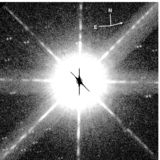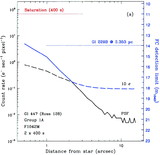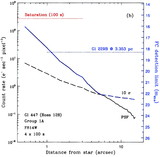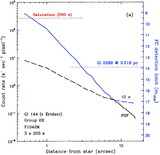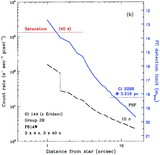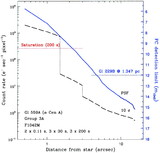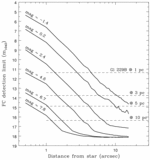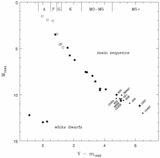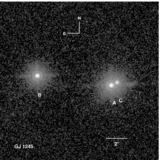Image Details
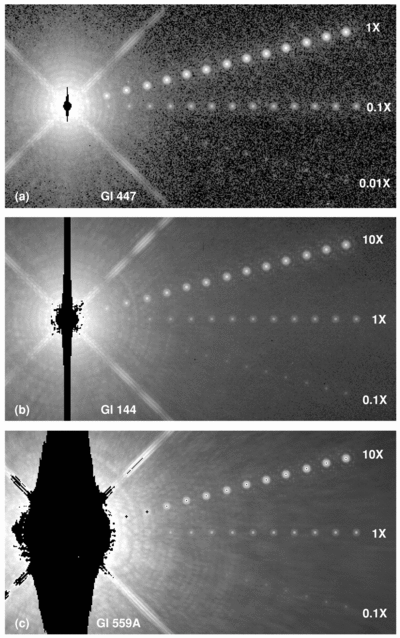
Caption: Fig. 6.
19﹩\arcsec﹩ × 10﹩\arcsec﹩ sections of the deepest F1042M images of the representative stars from groups 1–3. Saturated pixels are blackened. Three sets of artificial FCs spaced by 1﹩\arcsec﹩ intervals and located 1﹩\arcsec﹩–14﹩\arcsec﹩ from each star have been added to each image. The labels to the right of each set identify the brightness of the constituent images as a factor of the integrated brightness of Gl 229B through F1042M. The brightnesses of the artificial FCs have been scaled to the distances of the respective target stars. Thus, each set of artificial FCs demonstrates the detectability of a FC having 0.01, 0.1, 1, or 10 times the F1042M luminosity of Gl 229B as a function of separation from the target star. (a) Demonstration of detection limits for group 1 target Gl 447 (Ross 128). The set of FCs marked "0.01﹩\textsf{X}﹩" represents objects that are 1 mag fainter than the ultimate 10 σ detection limit for the 400 s exposures through F1042M (see Fig. 2a). (b) Demonstration of detection limits for group 2 target Gl 144 ( Eridani). (c) Demonstration of detection limits for group 3 target Gl 559A (α Centauri A). Note that the artificial FCs marked "10﹩\textsf{X}﹩" saturate the detector in 200 s.
Copyright and Terms & Conditions
© 2000. The American Astronomical Society. All rights reserved. Printed in U.S.A.


